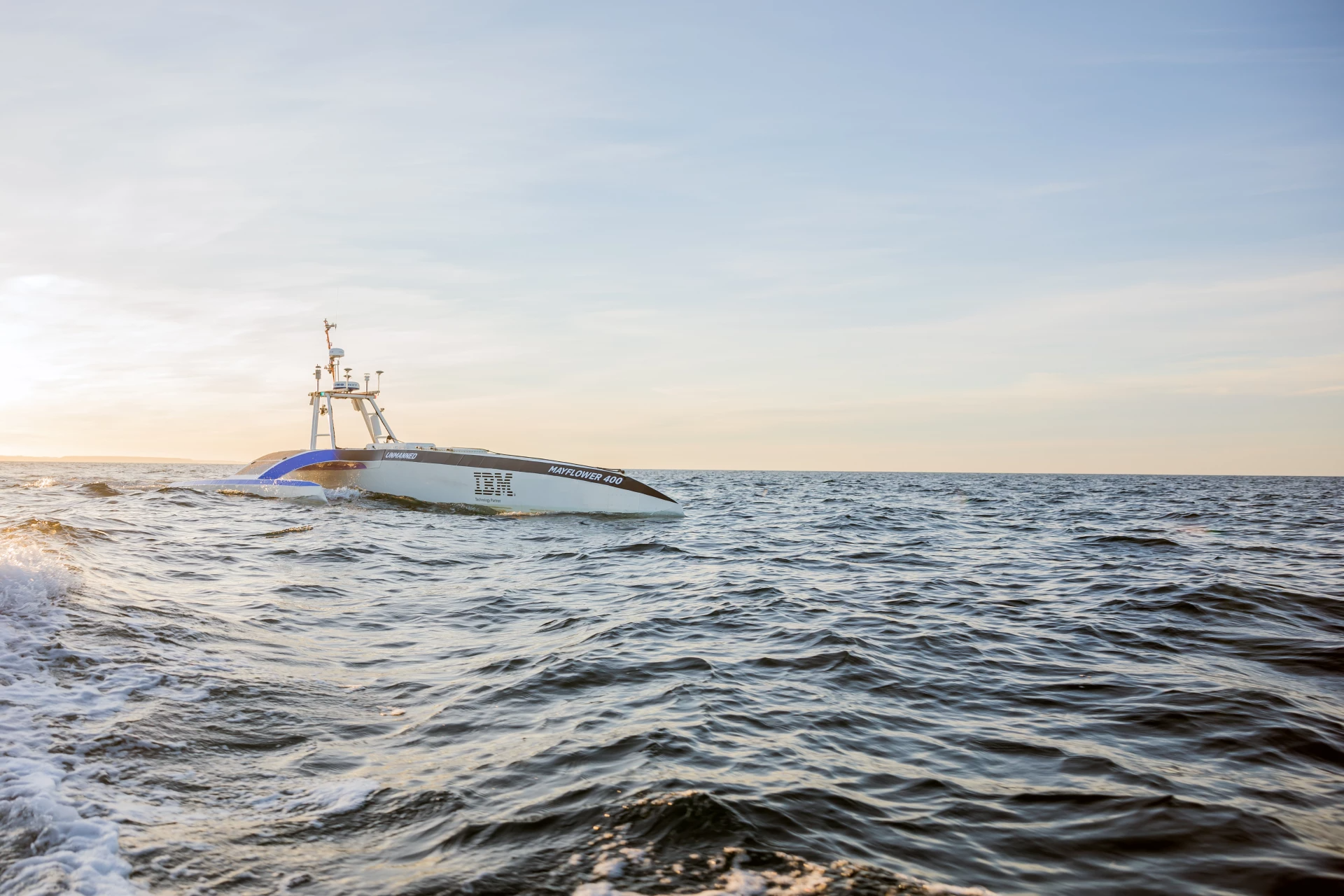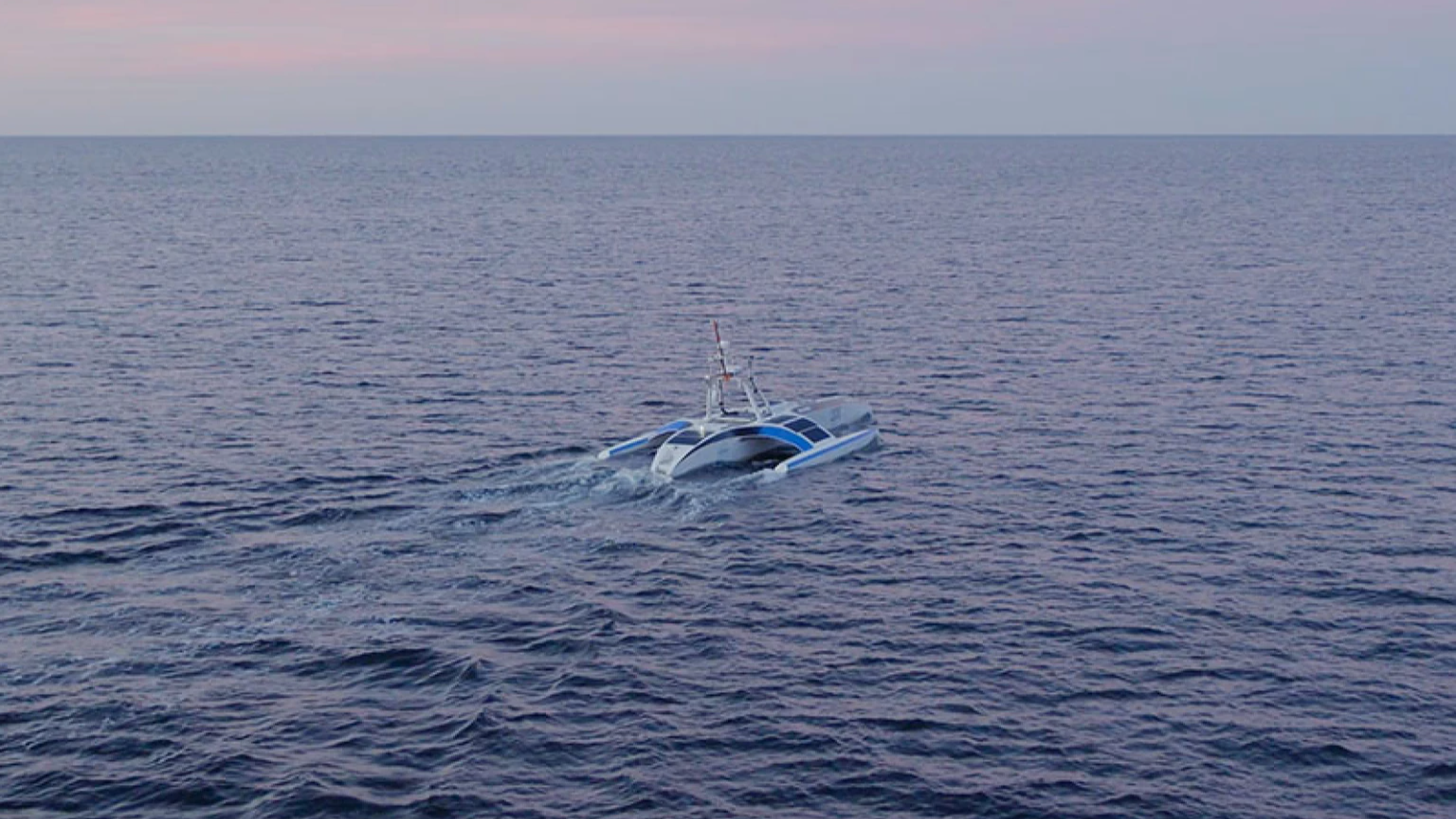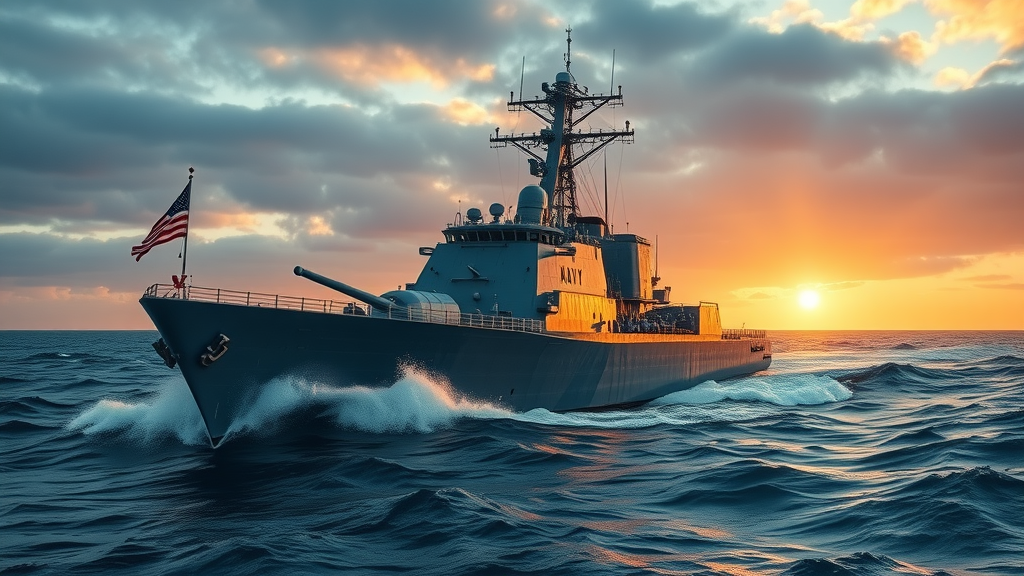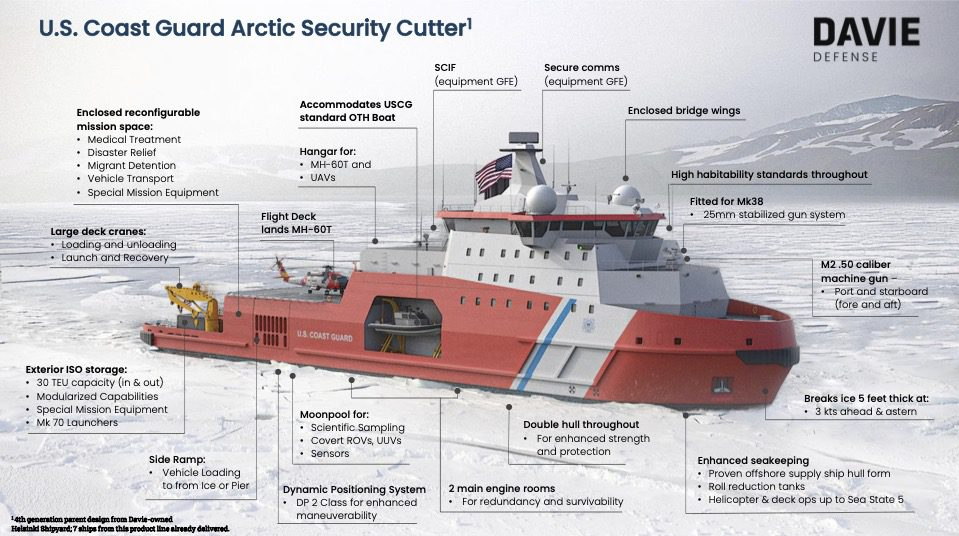Did you know that over 80% of our oceans remain unexplored? The Mayflower Autonomous Ship is rewriting the map—one fully-autonomous nautical mile at a time! In a world where ocean research is more vital than ever, the mayflower autonomous ship stands out as a pioneer among crewless vessels. Fueled by artificial intelligence and advanced satellite communications, this groundbreaking project is changing the shape of marine research and charting new courses across the Atlantic Ocean. Dive in to discover how the mayflower autonomous ship project is propelling us into a new era of maritime exploration, combining the power of AI captains with the lessons learned from humanity’s original ocean crossings.
A Startling Leap: Mayflower Autonomous Ship’s Unprecedented Journey
The mayflower autonomous ship’s journey is a startling leap forward, echoing the spirit of the original Mayflower but propelled by the boundless possibilities of artificial intelligence. Unlike any traditional research vessel, this cutting-edge autonomous ship set sail without a human captain or crew, relying instead on an “AI captain” and a suite of autonomous systems to guide it across the often unpredictable waters of the Atlantic Ocean. The ship project, backed by innovative partners like Promare and IBM Research, took the bold step of attempting to cross the atlantic ocean entirely on its own—a mission that challenged the boundaries of both technology and public imagination.
At its core, the mayflower autonomous ship symbolizes a blend of history and future-facing innovation. Its journey not only accomplished the remarkable feat of crossing the Atlantic but also demonstrated the robust capabilities of fully autonomous vessels. Facing ferocious storms, mechanical quirks, and stretches of uncharted open sea, the vessel proved that autonomous research is no longer science fiction—it is our new reality. By traversing thousands of nautical miles with precision and resilience, the Mayflower project illuminated the possibilities for future marine research and deepened our understanding of oceanic frontiers. As the world looks to fight climate change and advance sustainable research, projects like this are paving the way.
"Over 80% of our oceans remain unexplored—but the Mayflower Autonomous Ship is rewriting the map."

What You'll Learn from the Mayflower Autonomous Ship Project
Origins and construction of the mayflower autonomous ship
How artificial intelligence and satellite communications steer the journey
Impact on ocean research and autonomous ship technology
Current status and future implications for fully autonomous sea travel
Personal insights on the meaning behind the mayflower autonomous ship project
Tracing Roots: Where Was the Mayflower Autonomous Ship Built and Why?
The inception of the mayflower autonomous ship was not just about the technology—it was about place and purpose. The ship was meticulously constructed in Plymouth, England, deliberately echoing its historic namesake that once carried pilgrims to the United States. This modern build harnessed the collaborative spirit of British engineers, Promare, and IBM Research to create an autonomous ship project that would do more than commemorate a voyage; it would advance ocean research and maritime innovation on a global scale. The choice of Plymouth was both symbolic and practical, leveraging a port with a longstanding maritime legacy and proximity to cutting-edge research facilities.
Why Plymouth? Not only did its rich maritime history offer a suitable backdrop for the next chapter in autonomous navigation, but the city also provided access to the necessary high-tech shipyards, expert engineers, and flexible regulatory support needed for such a pioneering project. From the assembly dock to its launch into the chilly Atlantic, every moment in Plymouth encapsulated a commitment to pushing the boundaries of autonomous vessel construction and operation. The mayflower autonomous ship is, therefore, both a tribute to history and a beacon for the future of marine research and ocean crossing.

The Vision: Why Build a Mayflower Autonomous Ship?
Inspirations from historic endeavors such as the original Mayflower
The drive for pushing ocean research and autonomous ship boundaries
Responding to evolving global needs in maritime exploration
The journey began with a bold vision—could a fully autonomous vessel cross the same Atlantic route as its 17th-century predecessor, this time propelled not by wind and hope, but by artificial intelligence? The Mayflower Autonomous Ship Project sought not only to honor a pivotal moment in history but to spearhead a new age of marine technology. The inspiration was drawn from the original Mayflower’s daring, but with a mission fully aligned to today’s pressing environmental and scientific questions.
Driven by mounting concerns over climate change and a hunger for more effective ocean research, project leaders envisioned a ship that could operate around the clock, unaffected by human fatigue or operational limits. By removing a human captain and transforming the vessel into a research vessel navigated by computer vision and AI decision-making, the team could safely collect marine data where traditional ships struggle to go. The Mayflower Autonomous Ship Project is thus both a homage and a hope—for a sustainable, data-driven approach to understanding our oceans.
Technological Marvel: Inside the Mayflower Autonomous Ship Project
At the heart of the Mayflower Autonomous Ship project is a suite of pioneering technologies, each chosen for its role in achieving fully autonomous operations in the unpredictable environment of the Atlantic Ocean. The artificial intelligence “AI captain” serves as the decision-making brain, equipped with machine learning and neural networks that enable real-time course corrections, hazard avoidance, and optimization of research missions. Satellite communications, using advanced satellite systems and the Internet of Things (IoT), continuously relay the ship's global position, vital system diagnostics, and research findings back to shore-based teams.
Onboard, sensors such as LIDAR, sonar, and multiple cameras gather critical oceanographic and climate data, painting a real-time digital portrait of both surface and subsurface environments. This combination of edge computing and sensor technology allows the research vessel to autonomously detect marine life, adapt to environmental hazards, and even reroute itself to avoid severe weather—demonstrating an unprecedented leap in autonomous ship design. Below is a closer look at these components and their functions:
Core Component |
Function |
Associated Technology |
|---|---|---|
Artificial intelligence |
Navigational decisions |
Machine learning, neural networks |
Satellite communications |
Global positioning and data relay |
Satellite systems, IoT |
Sensors |
Oceanographic data collection |
LIDAR, sonar, cameras |
The Maiden Voyage: Crossing the Atlantic Ocean
When the Mayflower Autonomous Ship first set sail from the port of Plymouth, it set out to cross the Atlantic Ocean with no human captain aboard. The Atlantic crossing mirrored the original Mayflower’s westward journey but achieved an unprecedented milestone by doing it fully crewless—a feat enabled by its suite of advanced autonomous systems. With AI managing every navigational detail and edge computing analyzing real-time data from weather sensors and marine instruments, the ship braved storms and navigated around hazards with split-second decision-making capabilities.
This 3,000+ nautical mile journey captured the imagination of scientists, engineers, and ocean enthusiasts alike, showcasing just how far autonomous vessels have come. The challenges—ranging from unexpected mechanical hiccups to vast stretches of open ocean—were tackled with resilience. The AI captain coordinated closely with weather feeds from partners like The Weather Company, plotting courses that maximized both scientific research opportunities and vessel safety. As the world’s eyes followed the ship’s every move and setback, the Mayflower project proved it was possible to cross the Atlantic Ocean without the support of a traditional crew.
Harnessing Artificial Intelligence in the Mayflower Autonomous Ship
Real-time course correction and hazard avoidance
Autonomous research capabilities
Adaptive responses to changing weather and sea conditions
The AI captain is the heartbeat of the Mayflower Autonomous Ship, orchestrating every move from course plotting to the deployment of research tools. Using deep learning algorithms, the artificial intelligence system evaluates streaming sensor data, identifies floating objects or unexpected obstacles, and adjusts the vessel’s trajectory with lightning precision. This real-time hazard avoidance distinguishes the ship from conventional research vessels, enabling it to operate independently for far longer periods.
Key to the project’s success was the AI’s ability to shift focus—from pure navigation to active research—without missing a beat. Leveraging computer vision and edge computing, the
collected critical data on marine biodiversity, ocean temperatures, and the impacts of climate change. With adaptive algorithms, the AI responded to changing conditions, re-routing the vessel around storms or steering it into areas rich with marine life ripe for study. This level of autonomy is paving the way for a future where autonomous ships carry out research missions that are too dangerous or remote for human crews.
Satellite Communications: The Unseen Navigator
Satellite communications represent the invisible thread linking the mayflower autonomous ship to command centers around the world. This technology is crucial not just for real-time GPS tracking but also for relaying massive streams of scientific data collected during the voyage. The ship’s satellite systems function as eyes and ears, ensuring that mission-critical decisions—whether about navigation, weather response, or research sampling—are always up-to-date and globally informed.
Advanced IoT integration allows ground-based teams to monitor the ship’s condition, intervene in emergencies, or recalibrate research missions on the fly. This two-way data flow is a game-changer for autonomous ship projects, providing unparalleled flexibility and reliability even in the face of unpredictable ocean conditions. By leveraging these satellite communications, the mayflower autonomous ship project not only made crossing the Atlantic possible but also established a new paradigm for how future research vessels will operate—crewless, tireless, and always in touch.
Beyond Navigation: Ocean Research Transformations with the Mayflower Autonomous Ship
While the mayflower autonomous ship’s navigational feats command headlines, its contribution to ocean research is equally groundbreaking. Autonomously gathering data in unfriendly or previously inaccessible zones, the vessel has become a silent sentinel of the ocean, quietly mapping marine ecosystems and tracking climate change indicators. Its array of sensors—combining LIDAR, sonar, and camera technologies—enable the autonomous ship to reveal new insights into the oceanic world, capturing marine life behaviors and monitoring coral reef health as never before.
This research vessel operates tirelessly, clocking thousands of nautical miles and logging datasets that feed directly into the scientific community’s efforts to combat climate change and ocean pollution. The mayflower autonomous ship project thus serves as both a technological and environmental triumph, opening a new era of sustainable, data-rich marine research. It has helped bridge knowledge gaps and inspire new missions, showing that autonomous research vessels can continue where human crews might falter.
My Perspective: The True Legacy of the Mayflower Autonomous Ship
In my view, what truly sets the mayflower autonomous ship apart is its dynamic blending of tradition and technology. The project’s success is not measured solely by its miles traversed or its technological advances, but by its symbolic legacy—proving that our greatest historical undertakings can inspire boundary-breaking innovation. In a time when autonomous vessels are poised to change industries from shipping to marine research, the Mayflower project stands as a testament to both ambitious thinking and practical collaboration between humans and machines.
The mayflower autonomous ship challenges us to imagine oceans not as barriers, but as bridges. Its long journey from the port of Plymouth to North America demonstrates that when we honor our past while embracing innovation, we can achieve feats that were once thought impossible. This project has rewritten the rules for ocean research and exploration, igniting a passion for the possibilities that fully autonomous vessels bring to the maritime world.
"The synergy of tradition and technology in the mayflower autonomous ship project is its real triumph."
Current Whereabouts: Where Is the Mayflower Autonomous Ship Now?
After its historic Atlantic crossing, the mayflower autonomous ship’s journey is far from over. As of now, the vessel continues to operate as a research vessel, collecting vital ocean data and serving as both a symbol and a catalyst for the next generation of autonomous research missions. Ongoing remote monitoring, facilitated by advanced satellite communications and a modern maritime control center, ensures that the ship remains charted and responsive to new environmental and scientific challenges.
The current whereabouts of the mayflower autonomous ship can be tracked through digital dashboards, a testament to just how connected and transparent autonomous ship projects have become. As research priorities evolve and new oceanic frontiers emerge, the ship stands ready—charting water where few have gone before, and proving day after day the extraordinary resilience of autonomous vessel technology.
Comparing Mayflower Autonomous Ship to Other Milestone Autonomous Ship Projects
First AI ship in world context
Global advances in fully autonomous vessels
Unique aspects of the Mayflower project
The mayflower autonomous ship made waves as one of the first AI-driven vessels to complete a transatlantic crossing, but it’s not the lone pioneer in this uncharted sea of autonomous research. Projects around the world—from the YARA Birkeland in Norway to China’s AI-enabled research vessels—have demonstrated incredible progress in autonomous systems deployment. However, what sets the Mayflower apart is the scale and complexity of its Atlantic crossing, accomplished without a physical crew while performing live research.
Unlike some counterparts with limited routes or land-based oversight, the mayflower autonomous ship combined edge computing, machine learning, and IoT connectivity to function as a fully independent, global-reaching research vessel. Its mission inspired not only marine engineers but also ecologists, policymakers, and technology enthusiasts hungry for sustainable solutions. The project’s openness about setbacks and triumphs also helped demystify autonomous ship technology, encouraging transparency across the wider field of ocean research and maritime innovation.
Key Challenges Faced by the Mayflower Autonomous Ship Project
Technical setbacks and breakthroughs
Environmental hazards and resilience
Public skepticism and regulatory hurdles
Every ambitious leap comes with growing pains. The mayflower autonomous ship project faced its share of technical setbacks, from unexpected hardware malfunctions to periods of unpredictable Atlantic weather that tested the vessel’s resilience and mission flexibility. Some of the most critical breakthroughs came in the form of emergency responses—AI-led hazard avoidance maneuvers that demonstrated the necessity of robust, adaptive algorithms onboard all future autonomous vessels.
Beyond hardware and code, the project had to overcome skepticism from the public and regulatory bodies still acclimating to the idea of crewless vessels operating on major shipping lanes. Continuous communication, strict safety protocols, and transparent crisis management helped the mayflower autonomous ship earn the trust of international partners and observers. As regulatory environments evolve alongside emerging technology, the Mayflower project will remain a guide for how to responsibly advance fully autonomous ocean research.
Key Takeaways: The Future of Fully Autonomous Ships
Significance of the mayflower autonomous ship in shifting perspectives
The role of artificial intelligence and satellite communications in autonomous ship navigation
Long-term implications for sustainable ocean research
The mayflower autonomous ship is more than a vessel—it is a proof-of-concept for the global shift towards AI-driven, sustainable maritime research. As artificial intelligence and satellite communications become standard on autonomous ships, their ability to operate remotely, flexibly, and around the clock will exponentially grow. This shift represents more than efficiency; it marks a deepened commitment to sustainable ocean monitoring and climate change mitigation.
Looking forward, expect to see fleets of autonomous ships scanning our oceans, supported by AI and IoT, collecting invaluable data on marine health, weather trends, and biodiversity. The mayflower autonomous ship project reminds us that with innovative thinking and collaborative spirit, the future of maritime exploration is boundless—and the map of our oceans has only just begun to be redrawn.
People Also Ask: Your Top Mayflower Autonomous Ship Questions Answered
Does the Mayflower ship still exist?
Yes, the original Mayflower ship from the 1600s no longer exists, but the mayflower autonomous ship—its modern namesake—continues to operate as a fully autonomous research vessel. This ship is actively monitored via satellite communications and contributes regularly to ocean research initiatives. Its ongoing operational status demonstrates the enduring value and versatility of autonomous ship projects for future scientific exploration.
What is the first AI ship in the world?
The mayflower autonomous ship is commonly cited among the world’s first fully AI-driven research vessels to attempt a transatlantic crossing. While other ships have trialed autonomous navigation, the Mayflower stands out due to its complete reliance on artificial intelligence for navigation, decision-making, and research operations, setting it apart as a pioneering autonomous ship project.
Who owns the Mayflower ship?
The mayflower autonomous ship is the brainchild of a collaborative partnership between the marine research non-profit Promare and IBM, supported by a global network of engineers and scientists. Promare leads the scientific direction, while IBM provides core technology and AI expertise—making it a landmark public-private partnership in the field of maritime innovation.
What is the first autonomous ship in the world?
Early examples of autonomous ships include small-scale vessels used for surveying and data collection, but the mayflower autonomous ship’s transatlantic journey marks a significant first for a fully autonomous, AI-driven research vessel operating over such a long and demanding open-ocean route. It serves as an example of how the future of shipping and research may increasingly rely on autonomous systems.
FAQs: Everything Else About the Mayflower Autonomous Ship
How long did the journey take?
The mayflower autonomous ship’s transatlantic voyage planned for approximately three weeks, covering more than 3,000 nautical miles. Actual timelines fluctuated due to technical adjustments and weather patterns, showing both the challenges and the flexibility of fully autonomous ships.What technologies were used to ensure safety?
Safety was ensured through layered technology, including real-time edge computing, onboard LIDAR and sonar, satellite communications, AI-driven hazard avoidance, and continuous remote monitoring by project partners.How much did the project cost?
Estimated project costs ran in the multi-million dollar range, reflecting the advanced technologies, development timelines, and cross-disciplinary expertise required to build and deploy the mayflower autonomous ship. Specific figures can be challenging to confirm due to proprietary funding details.What are its primary research missions?
The primary missions include monitoring climate change, tracking marine biodiversity, studying water quality, and providing data required for sustainable ocean resource management.
Conclusion: The Mayflower Autonomous Ship’s Enduring Impact on Ocean Research and Beyond
The mayflower autonomous ship project has set a new bar for innovation at sea—proving that the future of ocean research and exploration is bright, bold, and driven by artificial intelligence.
Next Steps: Explore More About Autonomous Ships
Sources
The Mayflower Autonomous Ship (MAS) represents a significant advancement in maritime technology, blending historical homage with cutting-edge innovation. This 15-meter-long, 6.2-meter-wide trimaran, constructed from glass/aramid/foam composites and carbon/Nomex materials, was designed to operate without a human crew, relying entirely on artificial intelligence (AI) for navigation and decision-making. (ship-technology.com)
The MAS embarked on its maiden transatlantic voyage on April 27, 2022, departing from Plymouth, England, with the goal of reaching Plymouth, Massachusetts. Despite encountering technical challenges, including mechanical issues that necessitated a diversion to Halifax, Nova Scotia, the vessel successfully completed its journey on June 5, 2022, after 40 days at sea. (maritime-executive.com)
At the heart of the MAS is its AI Captain, developed by IBM, which utilizes machine learning and neural networks to make real-time navigational decisions, avoid hazards, and optimize research missions. The ship is equipped with six AI-powered cameras, over 30 sensors, and 15 edge computing devices, enabling it to autonomously detect marine life, adapt to environmental hazards, and reroute itself to avoid severe weather. (newatlas.com)
The MAS’s successful voyage has provided valuable data to advance autonomous navigation and AI technology. Following its transatlantic crossing, the vessel has been stationed at the Woods Hole Oceanographic Institution, where scientists are preparing it for future research activities aimed at enhancing our understanding of oceanic frontiers. (insideunmannedsystems.com)
The Mayflower Autonomous Ship stands as a testament to the potential of AI-driven, crewless vessels in revolutionizing ocean research and exploration, paving the way for a new era of maritime innovation.
 Add Row
Add Row  Add
Add 




Write A Comment